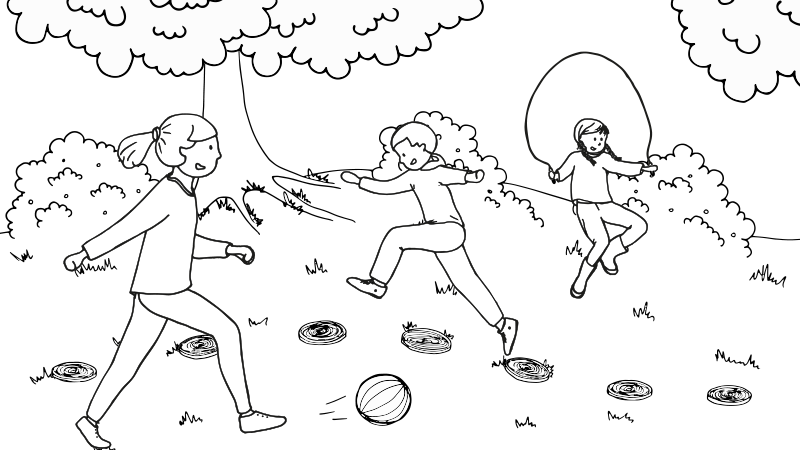Short description of the topic
Children name moving things and observe motion photography online. They photograph moving motives on the playground, select, and arrange photos to present them as a story.
Learning outcomes
-
Competencies
- Visual competence: observing and noticing the environment
- Digital and media competence: creating content using image and language
- Linguistic competences: speech competencies
- Social competences: cooperation
-
Target group
5 years and up- Whole class: Discussion and viewing examples of motion photography
Individual work: Taking photos
In groups: Arranging photos, creating a story
- Whole class: Discussion and viewing examples of motion photography
-
Required materials
- Camera
- Computer
- Printer
- large format paper (A3 or larger)
- Glue
- markers
-
Materials
- Examples of motion photos

Download
(.pdf 482.99 KB)
Description of the activity (step by step)
Preparation:
Initiate a conversation about moving vs. still. The children should try to think of things that move and things that do not and name them (children, cars, clouds, river vs. stones, houses, and chairs).
Invite the children to view motion photos on the computer together. Think together about what you see in the photos. How do you know that the photographs depict motion? What do children notice? For example, photos are blurred, an object or background is unrecognizable, etc. What kind of movements are in the photos (e.g. dancing, sports, vehicles, children, etc.)?
Implementation:
Go out to the playground together and encourage children to find and photograph different forms of movements on the playground. Each photographer should be completely free in finding her or his motives.
Reflection:
Divide the children into small groups and view the captured photos on the laptop. Let the children describe the depicted events and choose photos for printing.
Divide the children into two groups. Each group arranges the photos in an order of their choice. They invent a story based on the events and objects on the photos. Write down their story. Children glue the photos on an A3 paper.
Both groups present their stories.
Variations and additional ideas
Instead of working in groups, children can individually select and arrange photos and make up their own stories.
Activity for capturing still life:
https://media.eduskills.plus/activities/art%2Flife
Experience from kindergartens:
In the beginning, children needed a lot of encouragement, instructions, and examples of made-up stories. Soon, however, they were intrigued by the activity. The children added parts of the text that is typical for stories/fairy tales (for example: “Once upon a time…”) and described things that they noticed on and about the photographs. The child that was the author of the photograph added the real backstory of the photograph and others made things up.













